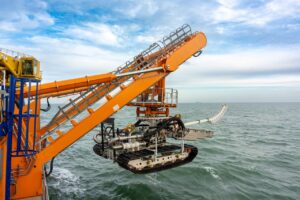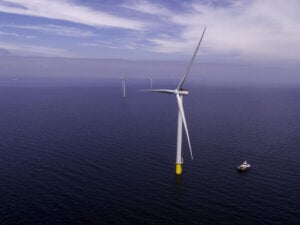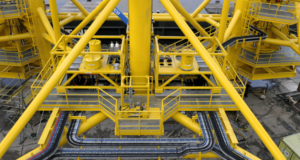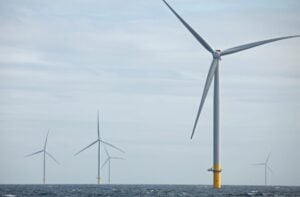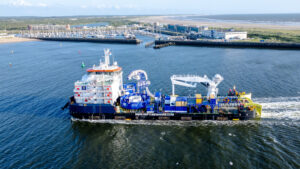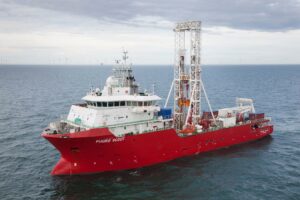Subsea operations – An overview
Any activity underwater and on or under the seabed in the various offshore energy sectors can usually be prefixed by the word “subsea”. Subsea activities began in earnest in the 30’s and 40’s of the last century with the first offshore oil wells. It was, however, the Victorian engineers laying communication cables across the seas and building ports to serve the industrial revolution many years ago, who set the seeds for what today has become an exceedingly narrow but incredibly hi-tech industrial sector.
Before any plans for construction work can be made the offshore wind farm planners require extensive surveys to map the seabed and formation under the seabed.
The results of these surveys can determine the type of foundations to be used and the infrastructure for the cable routing, burial assessment, and many other important factors; in short the subsea survey has a huge impact on the viability of the offshore wind energy project.
Vessels equipped with drill rigs and laboratories will recover samples from below the seabed. The cores are then examined, tested and categorised by specialist geotechnical engineers and laboratory technicians. There is equipment for ploughing the seabed to make trenches for cable burial and subsequent back filling.
Some companies are able to provide a range of subsea service to clients that include everything the client will need, while others are specialising in individual sectors. One common factor they share is that their equipment is constantly evolving to provide improved highly productive and safe operations.
The offshore wind industry has the great advantage that it can use relevant technological experience and capital equipment from the offshore oil and gas industry. This sector has been able to make investments in new equipment and services that can be funded by the fast returns possible as soon as production is on line.
Divers remain an important part of the subsea operations, but remotely operated vehicles (ROVs) have taken over many of the tasks previously undertaken by men. ROVs can vary in size from something not much bigger than a shoebox to huge and powerful machines with all the equipment on board needed to install, inspect or repair whatever the task may be.
Fugro
The design and build of the heavy trenching equipment very often involves co-operation between the builder and the customer who will be using the equipment. Subsea operators such as the renewables division of Fugro have worked together with Soil Machine Dynamics (SMD) to design and build the Q1400. During the past year Fugro has been involved with a range of subsea offshore wind projects across the globe including Germany, Sweden, the USA and the UK, with activities encompassing many vital elements of wind farm development, covering subsea surveys, foundation engineering and structure and cable installation services.
Fugro’s new trenching equipment required over 3 months of research and development resulting in this very powerful trencher fitted with both a common trenching module and separate tracked jetting and chain cutting skids. The trencher is capable of being operated as free swimming or on tracks down to depths of 3,000m, well beyond current offshore wind industry requirements, but making it available to other markets.

The first offshore deployment for this remarkable piece of equipment was working for Centrica on the 270MW, 75-turbine Lincs Offshore Wind Farm. This first contract, although close to the coast, was seen as being challenging because it had to cut 200mm diameter through some flint modules. The Q1400 is designed to be launched in up to sea state 6, thus avoiding costly downtime.
In addition to Fugro’s subsea surveying, sampling and trenching capabilities they also operate a large ROV fleet for light intervention work and survey tasks. Some of these subsea craft have been built and modified in house by Fugro to their own requirements while others are designed and built by companies such as Saab Seaeye.
The Gardline Group
The offshore oil and gas related contracts make up the lion’s share of the total work carried out by Gardline, one of a number of companies able to provide a wide range of subsea services. Offshore wind related work, although significant, only accounts for less than 10% of their activities. Their large fleet of specialist vessels is equipped to provide real time reports and analysis on geophysical and environmental survey contracts and these vessels have worked on many of the existing offshore wind farms.
They see some problems that have been created by the differences between the 2 maritime energy industries. Far more consideration has to be paid to economic factors in offshore wind projects, forcing contracts to be undertaken with fixed price, under all risk conditions.
This, and the lower day rates for vessels and services, often results in the vessels taking the higher rates for working on oil and gas projects and not being available when required for wind energy. Just one more in the long line of major challenges which is facing the industry and which will provide bottleneck congestion when the multigigawatts wind farms are at this critical phase of development.
MMT Sweden
In a previous edition of Offshore WIND we discussed UXO, unexploded ordnance. One subsea contractor has specialised in this work. MMT of Sweden is considered one of the best in this potentially risky sector. The company started in the late 1990’s carrying out subsea surveys for the first offshore wind farms around the Danish and Swedish coasts and today they have a healthy 30% of their turnover related to offshore wind. In their survey and seismic work they too have recognised the rate disparity between the established oil and gas market and the fledgling offshore wind market.
They feel that this could be overcome in part by joining survey jobs together to make longer-term projects. These would in turn result in greater economy being possible. The preparation required for projects is not proportional to the length of the project, and the necessary preparation required takes up too large a percentage of the time in the shorter jobs.
However in their specialist field of UXO surveys the greatest challenge is to find the best and optimised solution for these surveys to find a reasonably quick method for reporting the data and to produce the charts with the required resolution for their client. Recently they have been experimenting with changing the settings of the gradiometers and magnetometers used in these surveys and have been able to produce some innovative results.
Reef Subsea PowerS Umbilical
A relatively new player in the subsea market is Reef Subsea Power & Umbilical (RSPU), part of the Reef Subsea group. Already they have secured a significant contract on one of the largest European offshore wind farms being developed, Gwynt Y Mor (GYM), and they have completed several other work scopes in the offshore wind energy market in the Thanet, Greater Gabbard and Lines wind farm projects.
RSPU specialises in the installation and burial of submarine cables, flexible products and umbilicals. In February 2013 they will commence the installation and burial of the total 161 inter-array power cables of the wind farm Gwynt Y Mor. This will involve the Reef Subsea Group members delivering a suite of integrated subsea engineering services using its sophisticated equipment and highly experienced personnel.
RSPU have every intention to become the leading installation and trenching company, and last year took delivery of a further trenching asset to boost their capacity.
The jet trencher Q1000 was delivered to Reef Subsea Power & Umbilical following months of design and build in collaboration with manufacturer Soil Machine Dynamics (SMD).
The Q1000 jet trencher was launched in October 2012, and after trials in November, supported by SMD, it was put through operational trials on a UK wind farm supported by the Reef Despina. With the aid of its heavy latch beam Launch and Recovery System (LARS), it is capable of operating in extremely challenging environments, particularly associated with offshore wind farms.
Deep B.V.
The rate differential problems encountered by companies in subsea operations described above in this article do not seem to be such a problem to a company that has little or no previous involvement with offshore oil and gas. Founded in 1999 and primarily working on many forms of surveys where metering meets water in the ports, waterways and coastal regions of Europe, Deep B.V. went offshore in 2007.This late and direct entry into offshore wind enabled the company to structure to the required rate and keep one step ahead of the competition. In their opinion the offshore wind industry is far more open when offered new and cost effective solutions compared to the settled formula used in the oil and gas sector. Offshore wind now accounts for 30% of Deep’s activities.
They are relatively small, with 50 personnel, but this gives them a greater ability to be flexible and think outside of the box. Standardisation is not for them, fitting their technology to suit the job, rather than making the job fit the technology.
Before, during, and after the wind energy projects; Deep BV are busy with pre and post installation geophysical surveys, cable route engineering and touch down monitoring during the cable lay.
They have worked hard and already in this short time have enhanced certain survey techniques, specifically for measuring the depth of burial of wind farm cables.
Another field where Deep’s services are gaining a good reputation is in scanning and plotting UXO and submerged obstacles prior to trenching saving damage to equipment and more importantly possible injury to engineers.
No lack of personnel
There is a problem in the offshore wind sector in general that appears not to have an effect on this sector of the industry. The lack of qualified and experienced engineers and other personnel experienced by other parts of the industry is not a problem here. Some companies have recruited and trained their own staff, and in general there seems to be a cupboard that is well stocked with personnel who either want to start or who are already experienced at all levels.
This may well be due to the amount of oil and gas related work providing ample alternative opportunities, but if this is so then let it be yet another example of where offshore wind can benefit from other energy sources. This sector of the offshore wind industry is a dark deep area where most of us will never visit. It is, however, the place where the very foundations of the industry are built.
Dick Hill




